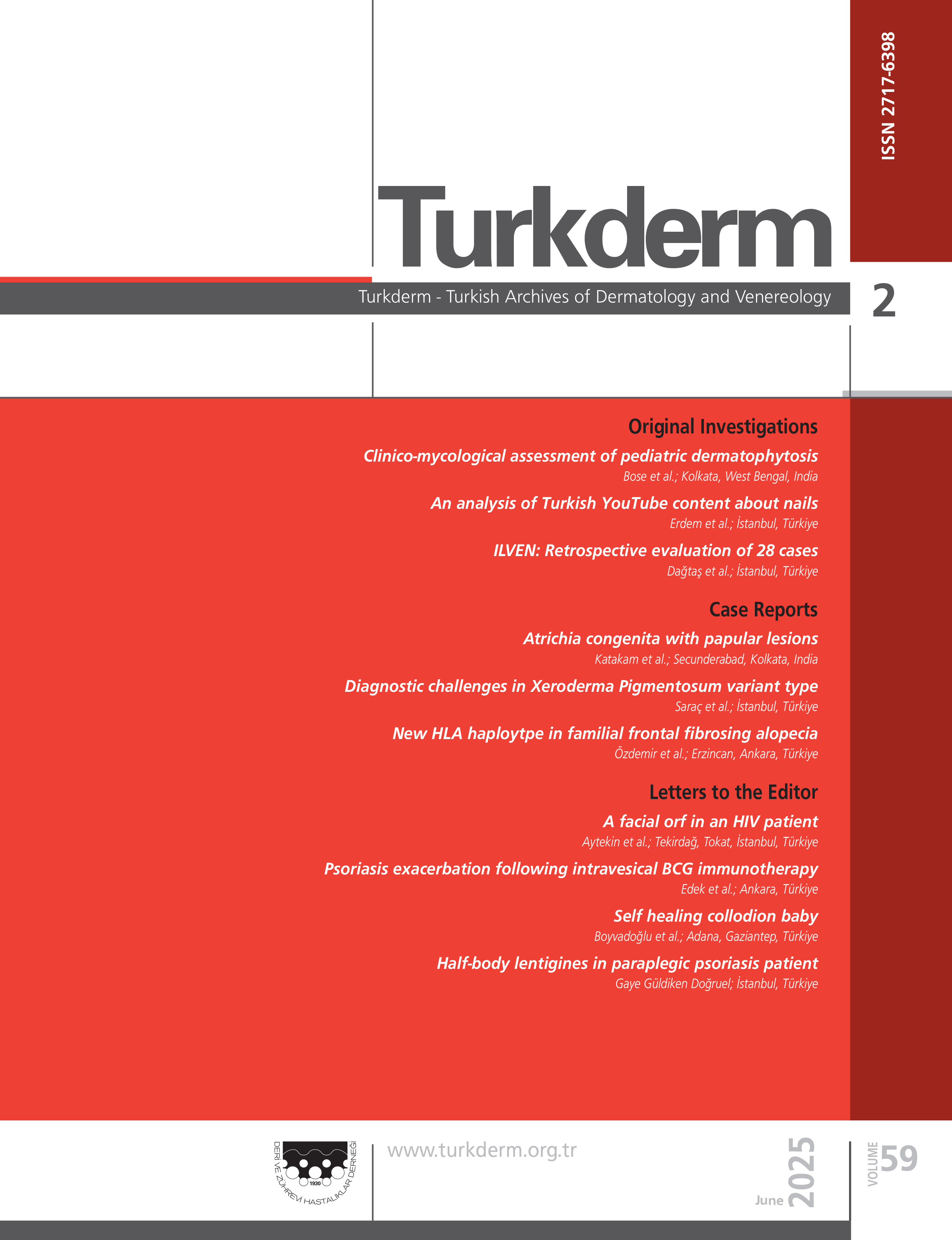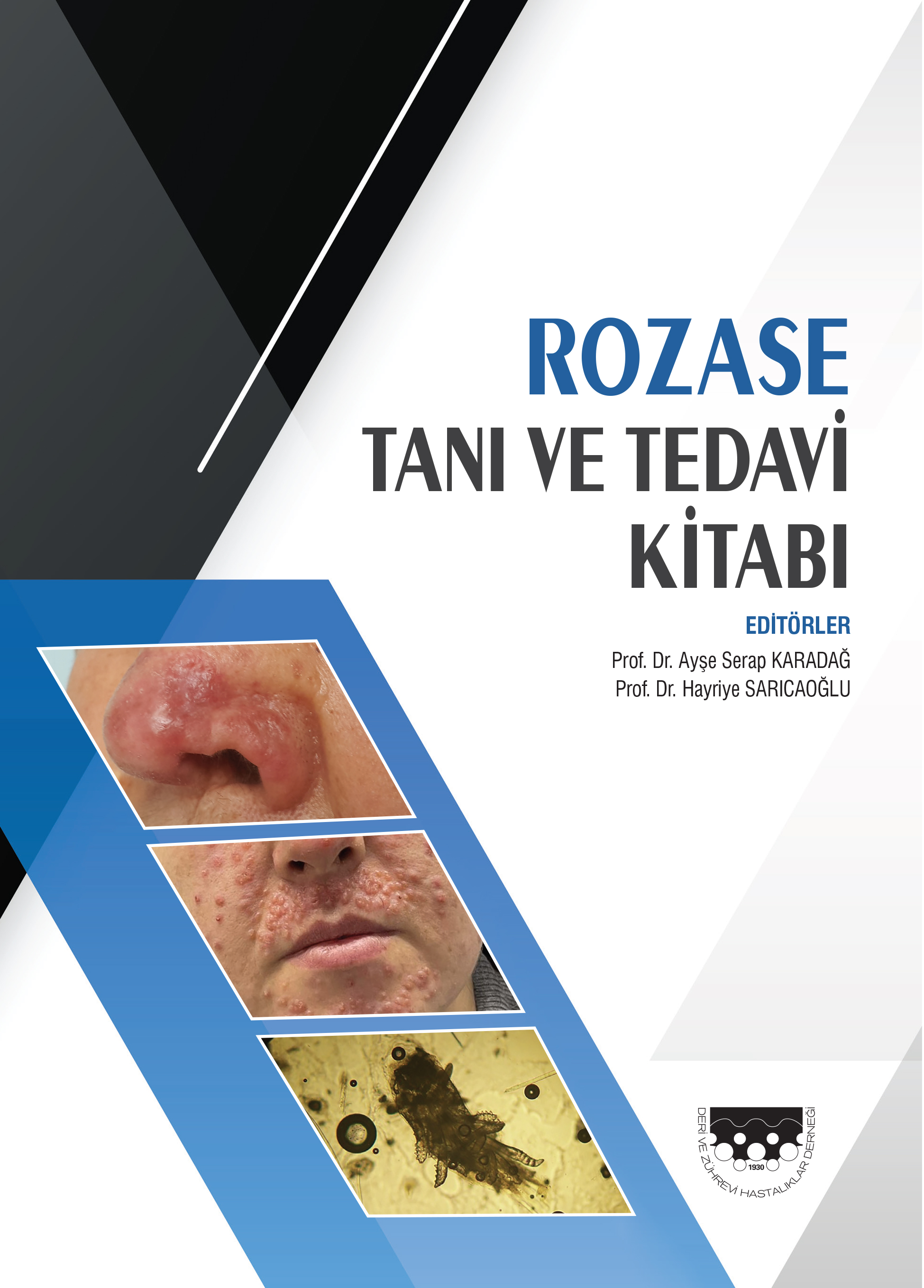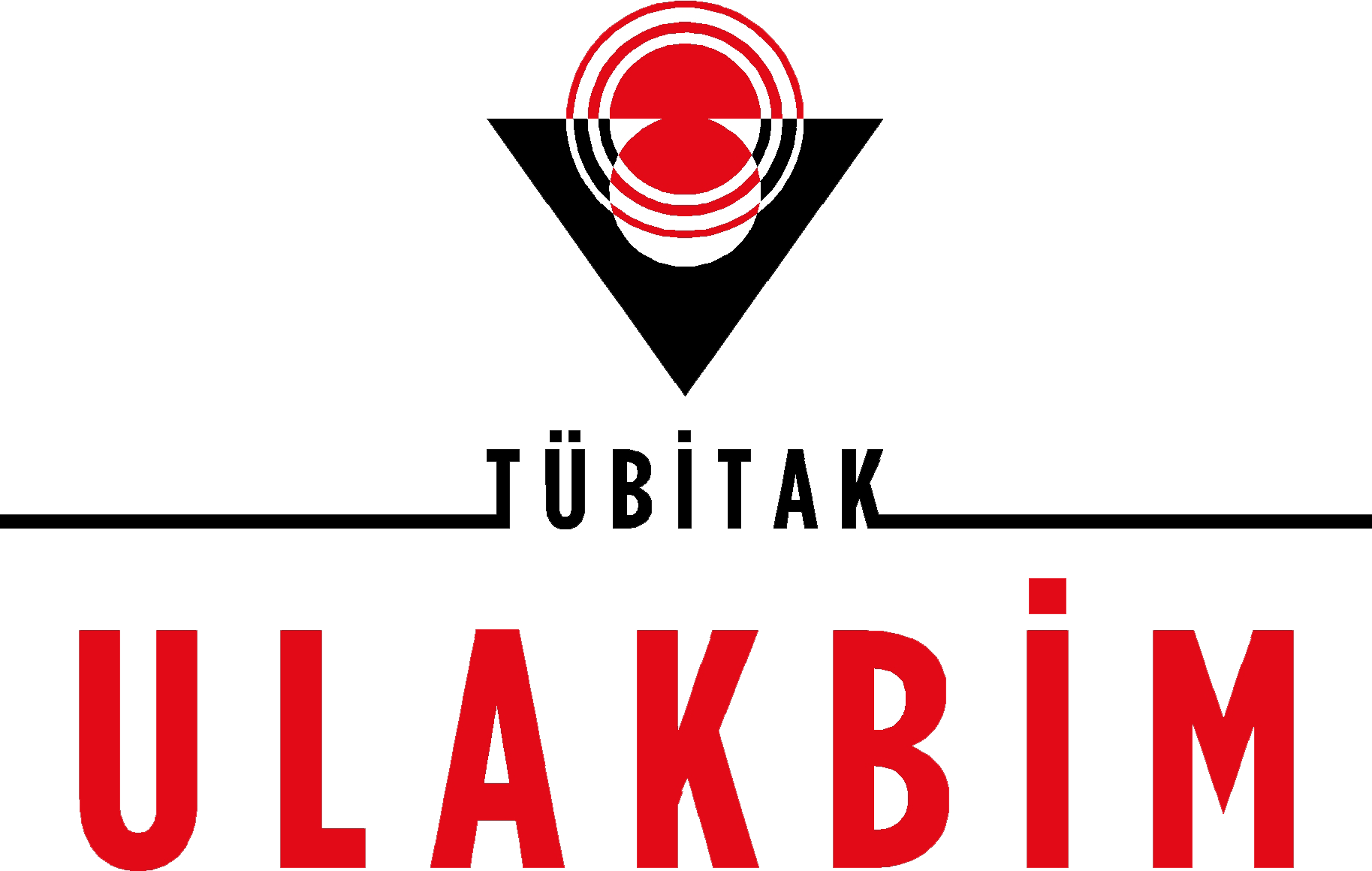Volume: 52 Issue: 3 - 2018
| REVIEW ARTICLE | |
| 1. | The state of occupational dermatoses in Turkey Şafak Metekoğlu, Mehmet Melikoğlu, Semih Güder, İlteriş Oğuz Topal doi: 10.4274/turkderm.49344 Pages 80 - 84 Due to the difficulties in diagnosing occupational diseases and deficiencies in statistical data, occupational diseases are underreported in Turkey. The average number of records in our country is around 10, when at least 100.000 new occupational skin diseases need to be diagnosed annually. This is due to the shortcomings in the diagnosis and notification of the occupational diseases in our country. In this article, we analyzed occupational skin diseases and their International Classification of Diseases codes, and how they are diagnosed medically and legally, and the difficulties in diagnosing these diseases. The article emphasizes that the dermatologists should be trained in occupational diseases and occupational health codes in order to improve diagnosing and reporting occupational diseases. |
| ORIGINAL INVESTIGATION | |
| 2. | Surgical correction of primary cicatricial alopecia: Experience with nine patients Ekrem Civaş, Andaç Aykan, Berna Aksoy, Muhitdin Eski doi: 10.4274/turkderm.20270 Pages 85 - 90 Background and Design: Primary excision and hair transplantation are infrequently used to treat stable primary cicatricial alopecia (PCA). Follicular unit extraction (FUE) method has gained popularity in recent years. In this study, we aimed to investigate long term results and effectiveness of hair transplantation in the treatment of PCA. Materials & Methods: In this study, 9 patients with stable (at least for a year) and histopathologically proven PCA who were treated with FUE hair transplantation between 2011-2014 were evaluated retrospectively. Medical archive data was used to retrieve treatment details and results of treatment. The satisfaction rate of patients were evaluated by five point Likert scale. Results: Nine patients with median age of 41 years were included retrospectively in this study. Median disease duration was six years and median time for stable disease was two years. Histopathological diagnoses were lichen planoplaris (4 cases), frontal fibrozing alopecia (2 cases), pseudopelade (2 cases) and folliculitis decalvans (1 case). Test transplantation sessions were performed in three cases who were under 30 years of age or clinically suspected to be non-stable. Hair transplantation was not performed in one patient due to disease activation after the test transplantation session. Median 1250 grafts were transplanted to eight patients with using FUE technique. The patients were regularly followed up for a median 26 months duration. Only one patient, out of eight transplanted, experienced reactivation in donor and recipient area in the postoperative second year. In seven transplanted patients there was not any reactivation and five patients were very satisfied with the result of hair transplantation. Conclusion: Optimal long-term results following surgical treatment can be achieved in PCA patients with proper patient selection. In this selected group of PCA patients FUE method of hair transplantation is a reliable choice of surgical treatment method. |
| 3. | Effect of psoriasis severity on inflammation parameters: Controlled study Hilal Gökalp doi: 10.4274/turkderm.05025 Pages 91 - 94 Background and design: Psoriasis is a complex and chronic disease that may be associated with systemic diseases. In this study, our aim was to show the relationship between C-reactive protein (CRP) and erythrocyte sedimentation rate (ESR) values with disease severity. Additionally, the relationship between body mass index (BMI) values and inflammation markers was investigated. Materials and methods: Sixty-two patients with chronic plaque psoriasis and 62 patients with non-psoriasis were included in the study. Psoriasis severity was calculated using psoriasis area severity index (PASI). Psoriasis severity was assessed in relation to BMI, serum CRP and ESR values. In addition, psoriasis patient data were compared with control group data. Results: Of the 62 psoriasis patients included in the study, 31 (50%) were female and 31 (50%) were male. The ages of the patients ranged from 18 to 69 years and the mean age was 41.74 ± 13.96. The mean PASI score was determined to be 15.86 ± 8.95. CRP, ESR and BMI values were higher in psoriasis patients than control group (p <0.05). In addition, CRP and BMI values were significantly increased as psoriasis severity increased (p <0.05). However, there was no relationship between ESR and psoriasis severity (p = 0.82). Conclusion: CRP value can be used as an objective parameter for evaluating chronic inflammation in psoriasis patients. |
| 4. | Evaluation of demographic and clinical characteristics of 166 patients with herpes zoster in the Kırşehir region Ersoy Acer, Hilal Kaya Erdoğan, Işıl Bulur, Emine Müge Acar doi: 10.4274/turkderm.74152 Pages 95 - 99 Background and Design: Herpes zoster (HZ) occurs by reactivation of the latent varicella zoster virus at dorsal root ganglia. In the literature, there are studies on socio-demographic and clinical characteristics of patients with HZ in our country and in the world, however, there has been no study performed in our region. We aimed to evaluate demographic and clinical characteristics of patients with HZ and to investigate differences and similarities with other epidemiological studies in Turkey and in the world. Materials and Methods: One hundred sixty-six patients clinically diagnosed with HZ by dermatologists between January 2015 and December 2016 and were followed for 3 months in terms of possible complications were included this study. Demographic and clinical characteristics of the patients were recorded. Results: The mean age of the patients was 51.48±21.05 (1-90) years. Eighty-seven patients were female (52.4%), 79 were male (47.6%). Thirteen patients (7.8%) were in the pediatric age group (<18). The frequency of patient admission was highest in December and lowest in March. The most frequent locations of the lesions were thoracic (76 patients, 45.8%) and lumbar (40 patients, 24.1%) regions. The lesions were on the left side of the body in 96 (57.8%) and right side in 70 (42.2%) patients. The most frequent triggering factor was emotional stress. Post-herpetic neuralgia (27.7%) was the most frequently seen complication. The most common systemic comorbidity was hypertension. Malignancy was present in only 3 patients (1.8%). Conclusion: Our data were highly comparable with other studies. However, occurrence of HZ mostly during the winter and in the left side of the body was the difference from other studies. We conclude that further country-wide studies with larger number of patients are needed in order to clarify the epidemiological and clinical characteristics of HZ in our country. |
| CASE REPORT | |
| 5. | An insight to pilonidal sinus etiology; interdigital pilonidal sinus Sevgi Kurt Yazar, Esra Koku Aksu, Cem Leblebici, Merdan Serin doi: 10.4274/turkderm.84554 Pages 100 - 102 A 46-year-old man who was working in leather tanning industry presented to our department with a mass and intermittent purulent discharge on his left hand for three years. Total excision was performed using transpositional flap. Histopathology was compatible with pilonidal sinus. Interdigital pilonidal sinus of the hand is a rare occupational disease. It is frequently encountered in hairdressers. Penetration of foreign hair to the interdigital web space is the cause of the disease. |
| 6. | A rare entity: Keratoderma blenorrhagicum in a patient with Reiters syndrome Şirin Yaşar, Dua Cebeci, Zeynep Altan, Pembegül Güneş, Sema Aytekin doi: 10.4274/turkderm.24022 Pages 103 - 105 Reiters syndrome is a systemic disorder, originally occurs as a triad of arthritis, urethritis and conjunctivitis. Cutaneous finding sconsist of a palmoplantar keratoderma, circinate balanitis or vulvitis, psoriasis-like skin lesions, and buccal ulcerations. We present a case of Reiters syndrome in a 25-year-old woman who developed the typical skin lesions - keratoderma blenorrhagicum and circinate vulvitis. |
| LETTER TO THE EDITOR | |
| 7. | Proactive treatment and clinical effectiveness in atopic dermatitisin atopic dermatitis Ülker Gül doi: 10.4274/turkderm.68888 Pages 106 - 107 |
| DERMATOLOGIST ANSWERS FOR COSMETOLOGY QUESTIONS | |
| 8. | Is hyaluronidase injection effective in treating tear trough hyaluronic acid filler deformity? Selda Pelin Kartal doi: 10.4274/turkderm.31855 Pages 108 - 110 |
| OTHER | |
| 9. | Erratum Page E1 |























